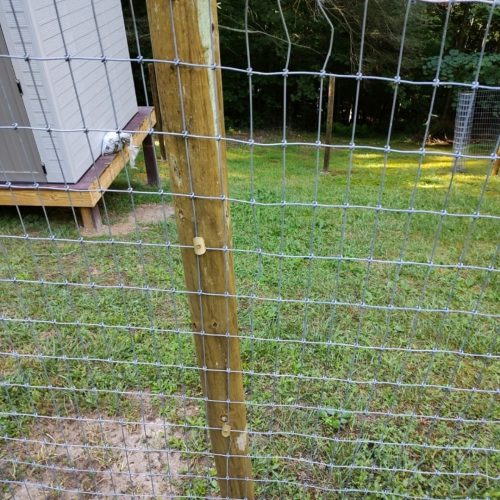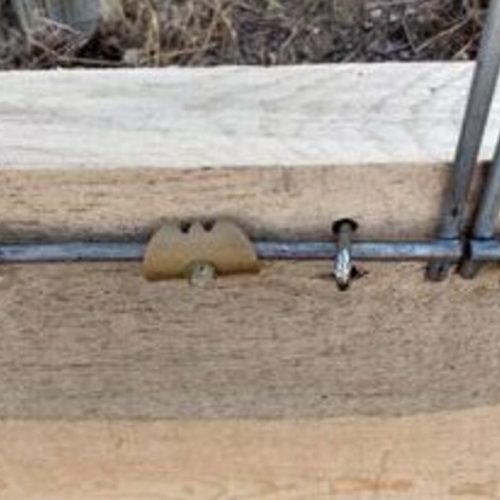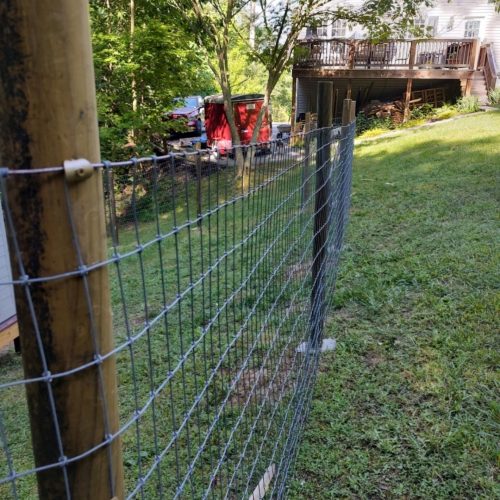Screws Vs. Nails to build a picket fence for your front yard
Trying to decide between screws vs. nails to build a picket fence for your front yard? When it comes to picket fence construction, one of the most important decisions you’ll make is whether to use screws or nails. While both fasteners serve a similar purpose, there are crucial differences that can affect the overall durability and appearance of your fence. In this article, we’ll explore the pros and cons of using screws vs. nails for building a picket fence, as well as the benefits of using a Cat’s Claw fencing product for a longer-lasting and better-looking result.
Screw vs Nail for Fencing: The Fundamentals
At first glance, the purpose of a screw and a nail may seem identical: both are used to hold two or more pieces of material together. However, there are some fundamental differences between the two:
- Screws have a helical thread that provides a stronger grip when driven into the material, while nails rely solely on friction.
- Screws can be more easily removed and reinserted, whereas nails often require forceful extraction, which can damage the surrounding material.
When considering fence fastener selection, these differences can have significant implications for the wood fence durability and longevity of your picket fence.
Pre-Drilling: When Is It Necessary?
While screws generally provide a more secure connection, they often require pre-drilling to prevent the wood from splitting. However, this isn’t always the case. Cat’s Claw construction lag screws feature a unique design that backs sawdust out of the screw pocket, eliminating the need for pre-drilling and reducing the risk of splitting.
Size Matters: Choosing the Right Screw Length
The size of the screw does make a difference when it comes to fence installation. Ideally, the screw should penetrate at least half the thickness of the post for a secure connection. For example, if you’re using a 4-inch thick post, you should choose a screw that’s at least 2 inches long.
Finishing Screws vs Regular Lag Screws
Another consideration when choosing screws for your picket fence is whether to use finishing screws or regular lag screws. Finishing screws have a smaller head, which creates a more discrete appearance, while regular lag screws offer a stronger hold. Cat’s Claw Fence Screws combine the best of both worlds, with a strong grip and an aesthetically pleasing finish.
Filling and Painting Screw Holes
Just like with nails, you can use wood putty to fill in screw holes for a smooth finish. Additionally, Cat’s Claw screws can be easily spray-painted to match the color of your fence, ensuring a cohesive look throughout.
The Benefits of Using Cat’s Claw Fence Fasteners
When it comes to fence repair methods and installation, Cat’s Claw products offer several advantages over traditional nails and other fasteners:
- Improved Durability: Thanks to their unique design, Cat’s Claw screws provide a stronger hold that resists loosening over time, ensuring your picket fence remains sturdy and secure.
- Weather Resistance: Cat’s Claw Fence Screws are made from high-quality materials, making them resistant to rust and corrosion. This is especially important for outdoor applications, where your fence will be exposed to the elements.
- Easy Installation: With the option to use an impact driver, Cat’s Claw screws can be installed quickly and easily, saving you time and effort compared to hammering nails or using other fastening methods.
- Reduced Wood Splitting: Cat’s Claw construction lag screws eliminate the need for pre-drilling and reduce the risk of wood splitting, resulting in a more professional and longer-lasting installation.
- Aesthetically Pleasing: Cat’s Claw fence screws offer a discreet appearance that won’t detract from the beauty of your picket fence. Plus, they can be painted to match your fence’s color scheme for a seamless look.
- Versatility: Whether you’re working with hardwoods, softwoods, or even plastics, Cat’s Claw fence screws are available in a range of sizes to suit your specific fencing project.
Making the Right Choice: Screws vs. Nails for Your Picket Fence
When deciding between screws and nails for your picket fence, it’s important to consider the durability, ease of installation, and overall appearance of your fence. While nails may be the traditional choice, Cat’s Claw fence screws offer a more secure and longer-lasting solution that’s also aesthetically pleasing.
By choosing Cat’s Claw screws over traditional nails or other fence post fasteners, you’ll ensure a strong, durable, and beautiful picket fence that will stand the test of time. So, whether you’re installing a new fence or repairing an existing one, consider the benefits of using Cat’s Claw weather resistant fasteners to make your fence the best it can be.
For more information on Cat’s Claw fencing products, including best fence screws and best fence nails, visit our website or explore our wide selection of fencing supplies at www.westernranchsupply.com. And if you’re ready to start your picket fence project, head to our shop to find the perfect Cat’s Claw fence screws to suit your needs. With Cat’s Claw fence screws and these helpful fence installation tips, you’ll be well on your way to building a picket fence that’s not only sturdy and secure, but also adds curb appeal to your front yard. Happy fencing!
For further assistance, reach out to the team at Cat’s Claw Fasteners. Our Head Cat Collector, Chava, is available at chava@catsclawfasteners.com for all your questions. Also, explore our blogs and follow us on Facebook, Instagram, Pinterest, and Youtube.

.png)










